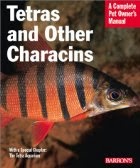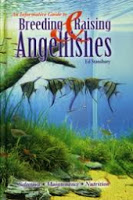by Norah Berg and Charles Samuels

Norah Berg lived in Seattle in the 1940\’s. She tells of her childhood in Montana, her move to Seattle, her life in boarding houses surrounded by various interesting neighbors. She became friends with a retired Marine, and their friendship grew into love. But they both struggled with alcoholism and eventually things became difficult so they took an offer to work in an oceanside resort and left Seattle for the beach. They dreamed of starting a new life, but things didn\’t turn out quite as expected. The resort was in shambles. Undaunted, Norah and her Sarge rolled up their sleeves and went to work. When eventually the resort work disintegrated, they found they had fallen in love with the ocean beaches and their new neighbors. Ocean City, at the time, was something of a shanty town. Shacks built of driftwood. Most of the people lived more or less off of the land, scavenging items off the beach to build and furnish their homes with, digging clams, fishing, occasionally hunting game in the lush, damp forest. There were lots of seasonal migrants who spent most of their time picking fruit in other Washington states, then came to winter on the beach. And plenty of ragged characters who had come there for the freedom to live how they liked. Norah slowly settled in and learned how to live comfortably enough, even though most of her homes over the years lacked modern conveniences (picture wood-burning stoves and outhouses at best), and of course there was always the rain and mud.
Besides the vivid picture of how the author made her life in a small, isolated community on the beach, there are lots of little stories about the various people she knew. Funny as well as sad. Norah and her husband tried very hard to overcome their drinking problem but for many years it caused a rift between herself and the ladies who lived in town (proper houses, not shacks!) I was pleased to read how she helped run the first public library Ocean City had. She eventually lost her position (too many hangovers). Years later she took up letter writing as passtime, writing in to radio stations and winning an astonishing amount of prizes. Eventually her letters got noticed by no less than Time magazine, and the fame that brought her flooded her little home with gifts from other readers- mostly books and magazines (she had written of how important reading material was to her neighbors in their poverty and isolation). Once again Norah opened a library, this time freely lending materials out of her own home. I liked that. I also really liked reading how she discovered gardening, and her wild, unplanned flower gardens attracted notice. The ladies in town finally deemed to befriend her then. Most of all, I appreciate how her story tells that even when they had little in way of possessions, Norah and her husband still loved life and felt themselves rich in many other ways. Her description of the wild beauty of the forests and beaches are wonderful.
While it is a lively story of a very particular time and place, this book is more than just that to me, because I also have family history in the very area she described. This book is a treasure to me even more than The Egg and I in that regard. I\’ve been to the beaches she talks about, driven through those little towns, have relatives in some of the areas she mentions. My father tells me that some of my relatives even know some of the people in this book.
My father so very kindly gave me this book, which I really appreciate as it\’s hard to find a copy.
Rating: 4/5 251 pages, 1952
more opinions:
Sara Ryan
anyone else?









